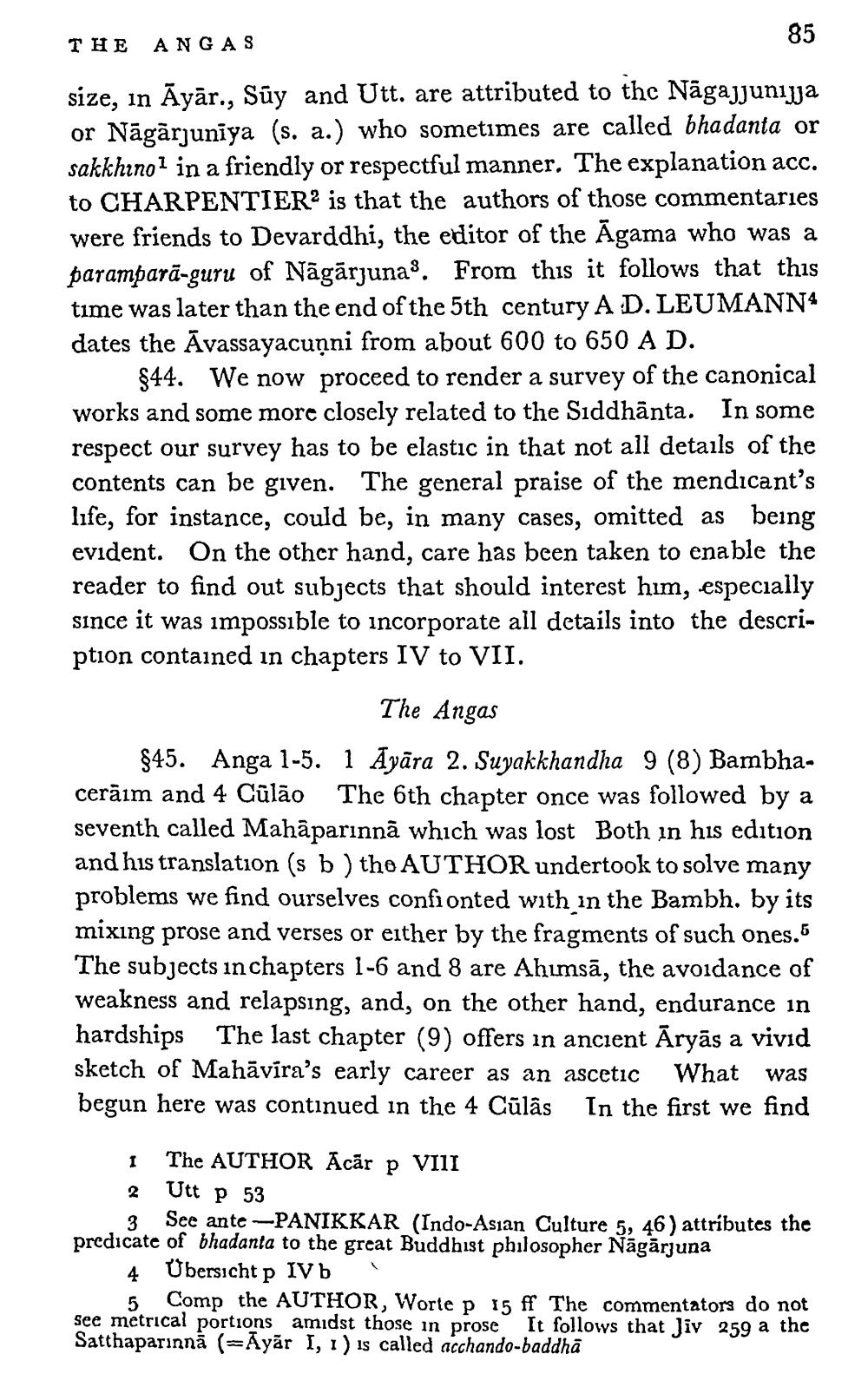________________
THE ANGAS
85 size, in Āyār., Sūy and Utt. are attributed to the Nāgajjunija or Nāgārjuniya (s. a.) who sometimes are called bhadanta or sakkhinol in a friendly or respectful manner. The explanation acc. to CHARPENTIER2 is that the authors of those commentaries were friends to Devarddhi, the editor of the Agama who was a paramparā-guru of Nāgārjuna. From this it follows that this time was later than the end of the 5th century AD. LEUMANN4 dates the Āvassayacuņni from about 600 to 650 A D.
$44. We now proceed to render a survey of the canonical works and some more closely related to the Siddhānta. In some respect our survey has to be elastic in that not all details of the contents can be given. The general praise of the mendicant's life, for instance, could be, in many cases, omitted as being evident. On the other hand, care has been taken to enable the reader to find out subjects that should interest him, especially since it was impossible to incorporate all details into the description contained in chapters IV to VII.
The Angas $45. Anga 1-5. 1 Āyāra 2. Suyakkhandha 9 (8) Bambhacerāım and 4 Cūlão The 6th chapter once was followed by a seventh called Mahaparinnā which was lost Both in his edition and his translation (s b ) the AUTHOR undertook to solve many problems we find ourselves confionted with in the Bambh. by its mixing prose and verses or either by the fragments of such ones. The subjects in chapters 1-6 and 8 are Ahimsā, the avoidance of weakness and relapsing, and, on the other hand, endurance in hardships The last chapter (9) offers in ancient Āryās a vivid sketch of Mahāvīra's early career as an ascetic What was begun here was continued in the 4 Cūlâs In the first we find
1 The AUTHOR Acār p VIII 2 Utt p 53
2 See ante -PANIKKAR (Indo-Asian Culture 5, 46) attributes the prcdicate of bhadanta to the great Buddhist philosopher Nāgārjuna
4 Übersicht p IV b
5 Comp the AUTHOR, Worte p 15 ff The commentators do not see metrical portions amidst those in prose It follows that Jiv 259 a the Satthaparinnā (=Āyar I, 1) is called acchando-baddha




